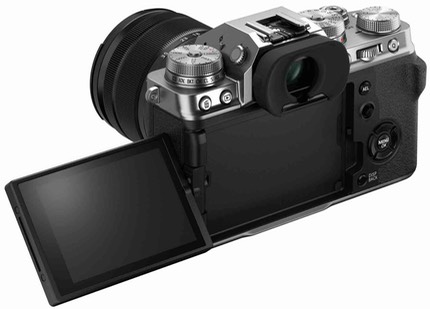Today Fujifilm announced the X-H2...uh, no, that should be: Today Fujifilm announced the X-T4. The X-T4 comes a little earlier than expected, and right on the X-H2's original expected launch timing, so you have to wonder if Fujifilm did a pivot in development, deciding the top of the X-T line was more important to iterate than the X-H line. Given how close the X-H1 and X-T3 were released, and how close they were in specs, that was to be expected, I suppose. If the X-H is going to have a continued life, it needs more differentiation from the X-T and it really needs to be schedule offset for the X-T, as well.
So I'd guess X-H2 in 2021 if Fujifilm can figure out what that model really should be, and X-T5 in 2022.

So, what's different in the X-T4 from the X-T3? Sensor-based IS—IBIS as it is usually referred to—for one. An issue with IBIS is that it tends to make the body thicker. Sometimes the same thing happens with articulating screens. Since the X-T4 now has both, one way the new camera is different than the old X-T3 is that the body has gotten a little thicker and heavier. That won't bother a lot of the X-T# shooters, but it is tending to make these cameras less differentiated from crop sensor DSLRs when it comes to physical attributes. Heck, it even is making the X-T4 a bit less differentiated from full frame mirrorless cameras. That plays against the core of why many people switch to mirrorless: size and weight relief.
Another thing the X-T4 seems to have picked up from the X-H1 is much more attention to video capability. While there's nothing that truly stands out about the video side of the X-T4, it looks to be a very capable 4K and 1080P video device now. The fully articulating screen suggests that Fujifilm was thinking of those video users, too. (Tilt versus swivel is a design factor that provokes a lot of discussion, and which can't be won with either choice. That said, in my experience, video users tend to prefer swivel, still users tend to prefer tilt.)
Power has changed a bit, too: the X-T4 gets a new NP-W235 battery—similar to Nikon's EN-EL15 in size and shape—that nets a normal CIPA shooting load of 500 shots (you'll likely do better than that in actual shooting, and there are low power settings to extend shooting). USB-based battery charging is now supported in camera, too. Strangely, Fujifilm is once again providing headphone monitoring either via a plug in the optional vertical grip, or via the USB-C dongle supplied with the camera.
8- and 16-bit TIFFs get added as an image format. Eterna Bleach Bypass and Classic Negative have been added as film simulations. Multiple exposure is now fully extended, ala Nikon's implementation. The shutter is quieter and rated to 300k actuations. The AF has improved, particularly Face and Eye detection.
Accessories—hey, it's a system camera! ;~)—were also part of Fujifilm's announcement. Besides the aforementioned VG-XT4 vertical grip, there's a new dual battery charger.
Perhaps not as many significant changes as some were hoping for, but definitely plenty of steps forward to attract a Fuji-fanatic.
The X-T4 is US$1699 body only, and will ship in late April or early May.
Support this site by purchasing from the following advertiser:
